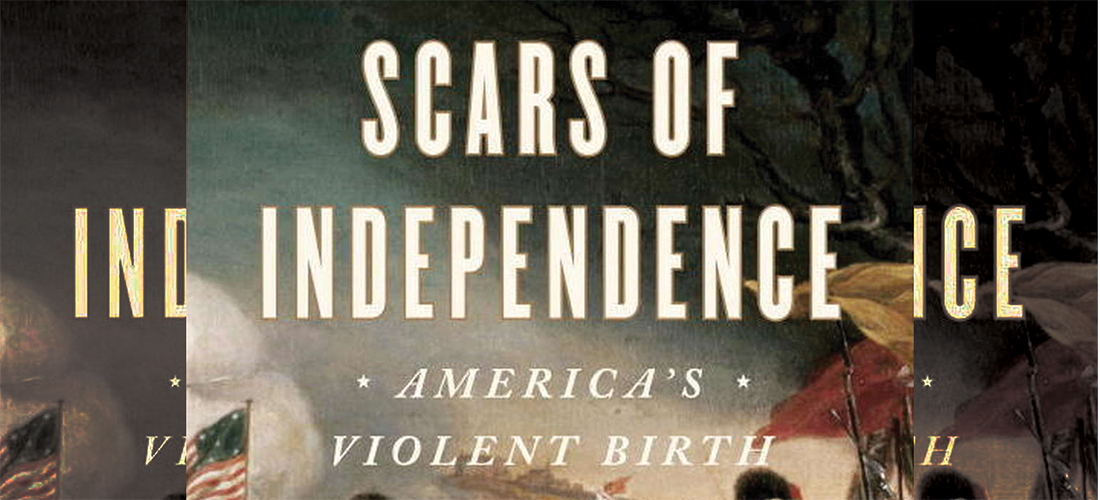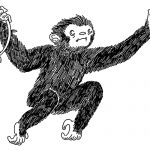
Revolutionary Scars
A revealing look at the cost of civil strife
By Stephen E. Smith
They’re called “uncle books,” popular histories you gift to your Uncle Leo so he can kick back in his easy chair and read about political and military luminaries such as Washington, Adams, Jefferson and Hamilton. These lengthy narrative histories, which are generally revisionist in intent and convey idealized portraits of their subjects, have done much to shape our beliefs about the founding of the Republic. What they haven’t done is examine the plight of ordinary Patriots, Loyalists, British and Continental soldiers, African-Americans, Native Americans and German auxiliaries, the brave, long-suffering souls who did most of the fighting and dying during the Revolutionary War.
In Scars of Independence: America’s Violent Birth, Holger Hoock attempts to set the record straight by revealing the brutality of our first civil war, and describing in graphic detail the torments endured by ordinary soldiers and innocent noncombatants on both sides of the Revolution. Hoock writes: “For two centuries this topic has been subject to whitewashing and selective remembering and forgetting. While contemporaries experienced the Revolution as frightening, messy, and divisive, its pervasive violence and terror have since yielded to romanticized notions of the nation’s birth.”
Hoock supports this thesis with statistics that suggest there was suffering aplenty. Per capita, 10 times as many Americans died in the Revolutionary War as in World War I and five times as many as died in World War II. Among prisoners of war, the death rate was the highest in American history. Between 16,000 to 19,000 Continentals died while confined by the British. And Hoock argues convincingly that Loyalist noncombatants routinely suffered imprisonment and torture at the hands of Patriots.
Hoock offers as an example the experience of Edward Huntington, who was convicted of being a traitor to the Patriot cause and was sentenced to spend “the rest of his life sixty to eighty feet underground in a dark, damp, claustrophobic tomb.” Huntington was transported to an infamous copper mine in Simsbury, Connecticut, and was lowered deep into a dismal cavern where he could not stand upright. He shared his incarceration with “violent criminals serving sentences from one year to life for horse thievery, aggravated burglary, highway robbery, sexual assault, and accessory to murder.” The subterranean chambers had no natural light, limited air circulation, constant dampness and employed a communal tub as a toilet, a breeding ground for “fevers, influenza, respiratory problems, dysentery and typhoid.”
Patriots employed arson, rape, confiscation and public shaming against their Loyalist neighbors, but tarring and feathering was the preferred punishment. The case of John Malcom, a Boston customs official, is cited as typical. After having hot tar and feathers applied to his naked body, Malcom spent two months in bedridden agony before fleeing to England, where he petitioned Parliament for monetary redress by sending pieces of his skin as proof of his loyalty. When such punishments failed to satisfy Patriot vengeance, many Loyalists were “killed by mobs or at the hands of marauding bands, hanged by order of councils of safety or assemblies of various states, or executed following court-martial.”
Hoock gives British atrocities, including Banastre Tarleton’s dishonorable conduct at Waxhaw, passing mention, but his primary focus is on lesser known campaigns, such as Washington’s genocidal response to Iroquois raids in the Wyoming Valley of Pennsylvania. Washington’s objective in punishing the Six Nations was “the total destruction and devastation of their settlements and the capture of as many prisoners of every age and sex as possible.” To that end, the Continental Army destroyed 45 towns and all of the Native Americans’ crops and food stores, plunging the tribes into starvation. Iroquois retaliated by torturing and mutilating Continental soldiers. Patriot Lt. Thomas Hubley recorded the barbarity in his diary that “their heads Cut off, and the flesh of Lt. Boyds head was intirely taken of and his eyes punched out. . . his fingers and Toe nails was bruised of, and the Dog had eat part of the Shoulders away likewise a knife Sticking in Lt. Boyds body.”
The fate of African-American combatants is, as one might expect, particularly disturbing. In most cases, slaves were promised their freedom by the government for which they fought, but their treatment was at best exploitive and their well-being of little concern to those who tendered assurances. Many slaves who served the Revolutionary cause found that promises weren’t kept, and the British treated African-American soldiers as disposable laborers, abandoning thousands to die of disease, before transporting the survivors to Nova Scotia, or Jamaica and other West Indian islands.
The bitterness occasioned by the Revolution lingered long after Cornwallis had surrendered at Yorktown, and acts of vengeance and retaliation took the form of physical violence and executions. Hoock recounts the 1782 hanging of Joshua Huddy, commander of a New Jersey Patriot militia, and the Patriots’ retaliation — known as the “The Asgill Affair” — in which Gen. Washington ordered that a British officer, Capt.Charles Asgill, be executed. Eventually, Asgill was released, but a generation of brutal warfare had habituated Americans to a thirst for revenge that no treaty could assuage.
Although Scars of Independence isn’t a pleasant read, it makes a significant contribution to our knowledge of the Revolution, and it’s another reminder that brutality is the norm in war, especially in civil wars. The question for readers is this: Are we obligated to acknowledge the abominations committed by our forefathers? As Maxim Gorky, a man who knew something of the horrors occasioned by civil strife, wrote: “I have no desire to make anyone miserable, but one must not be sentimental, nor hide the grim truth with the motley words of beautiful lies. Let us face life as it is. All that is good and human in our hearts needs renewing.”
Stephen E. Smith is a retired professor and the author of seven books of poetry and prose. He’s the recipient of the Poetry Northwest Young Poet’s Prize, the Zoe Kincaid Brockman Prize for poetry and four North Carolina Press awards.





